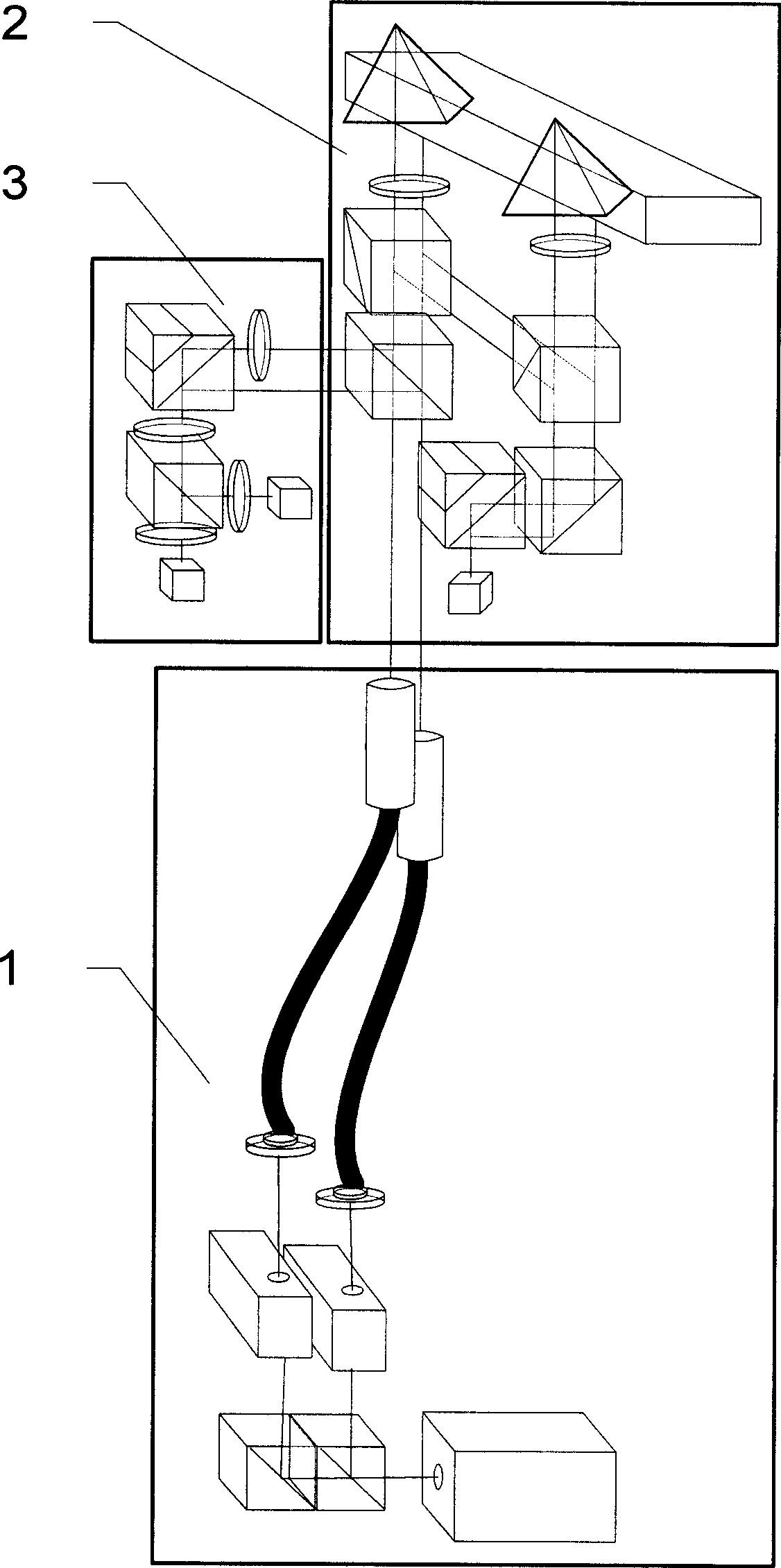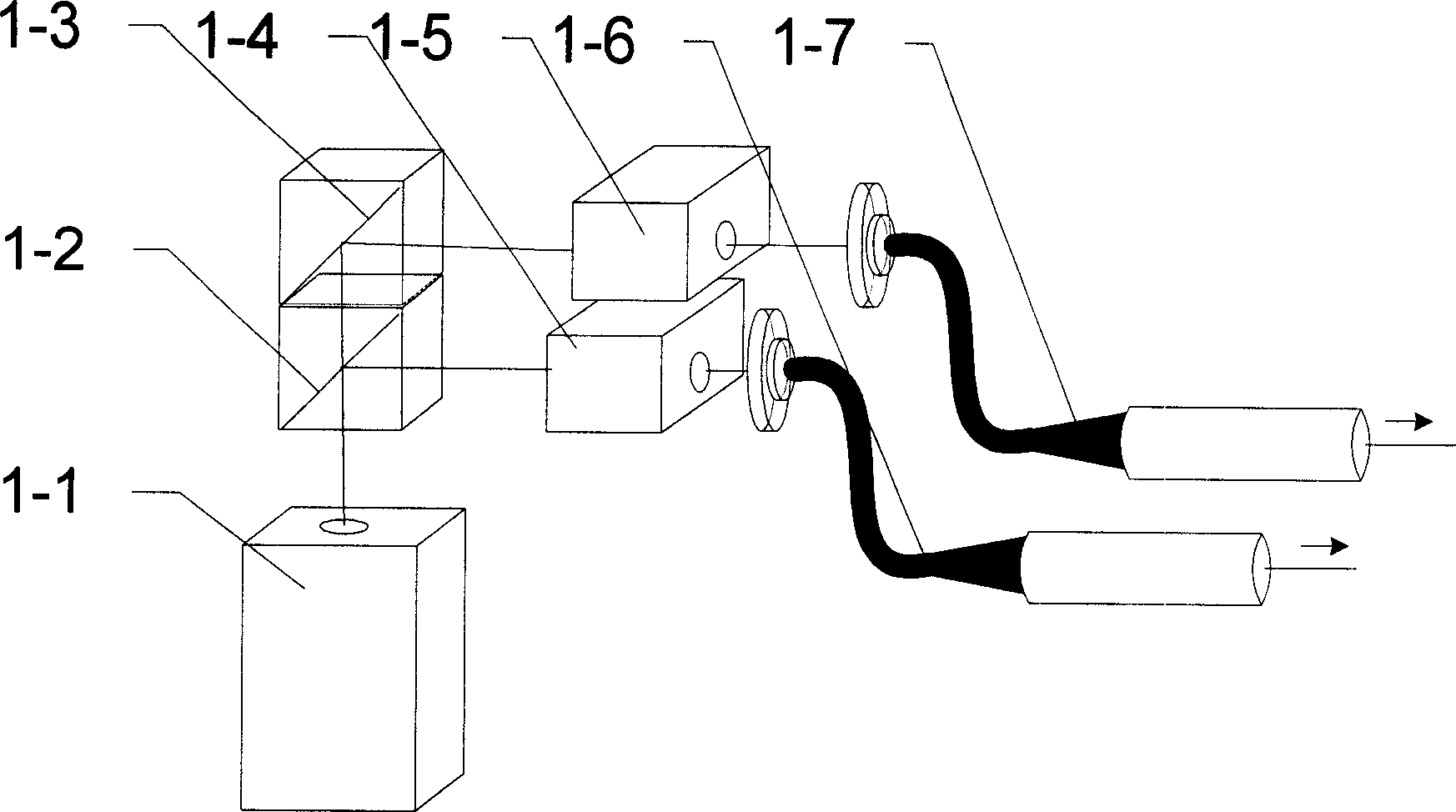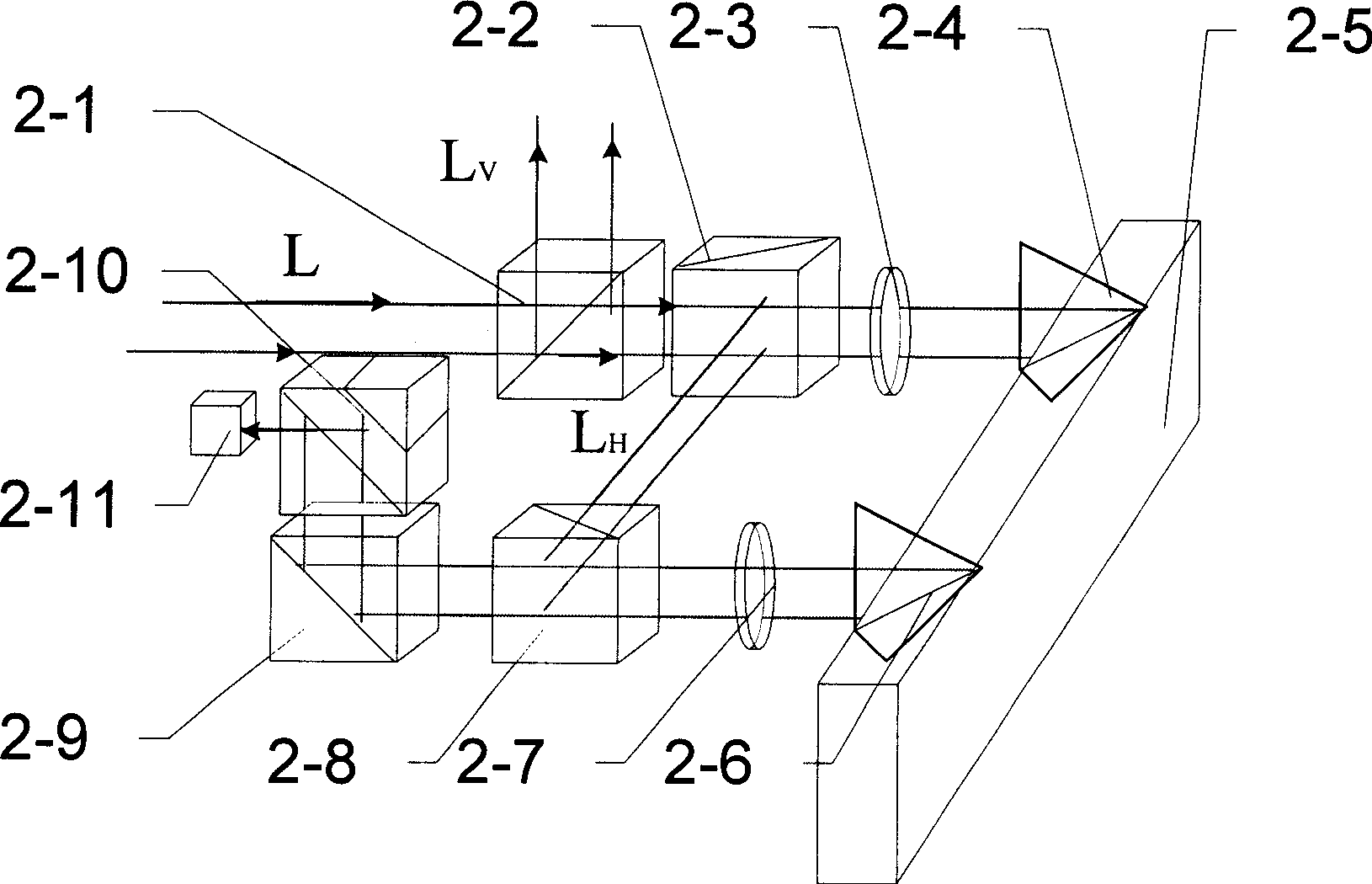Double-frequency laser interferometry apparatus
A dual-frequency laser interference and measurement device technology, applied in measurement devices, optical devices, instruments, etc., can solve the problems of light can not be completely separated, large period error, large nonlinearity of heterodyne interferometers, etc., to improve anti-interference. Capability and measurement accuracy, avoid frequency aliasing, the effect of high subdivision accuracy
- Summary
- Abstract
- Description
- Claims
- Application Information
AI Technical Summary
Problems solved by technology
Method used
Image
Examples
Embodiment Construction
[0018] The device consists of three parts, including the light source beam splitting optical path part 1, the measuring optical path part 2 and the receiving signal part 3 with a phase difference of 90°. In the light source splitting optical path 1, a beam splitting prism 1-2, a right-angle mirror 1-3, an acousto-optic modulation 1-4 and 1-5, collimator 1-6 and 1-7, the incident light source is divided into two beams of laser beams with frequency difference, and enter the measurement optical path part 2; the measurement optical path part 2 is respectively put into the polarization beam splitter prism 2-1, 2-2 and 2-8, depolarizing beamsplitter prism 2-10, right-angle mirror 2-9, 1 / 4 wave plate 2-3 and 2-7, measured mirror 2-5 and reference reflection After mirrors 2-4 and 2-6 reflect twice to realize the optical multiplier, they are received by the photoelectric receiver 2-11; the received signal part 3 with a phase difference of 90° is sequentially placed into a 1 / 2 wave plate...
PUM
 Login to View More
Login to View More Abstract
Description
Claims
Application Information
 Login to View More
Login to View More - R&D
- Intellectual Property
- Life Sciences
- Materials
- Tech Scout
- Unparalleled Data Quality
- Higher Quality Content
- 60% Fewer Hallucinations
Browse by: Latest US Patents, China's latest patents, Technical Efficacy Thesaurus, Application Domain, Technology Topic, Popular Technical Reports.
© 2025 PatSnap. All rights reserved.Legal|Privacy policy|Modern Slavery Act Transparency Statement|Sitemap|About US| Contact US: help@patsnap.com



